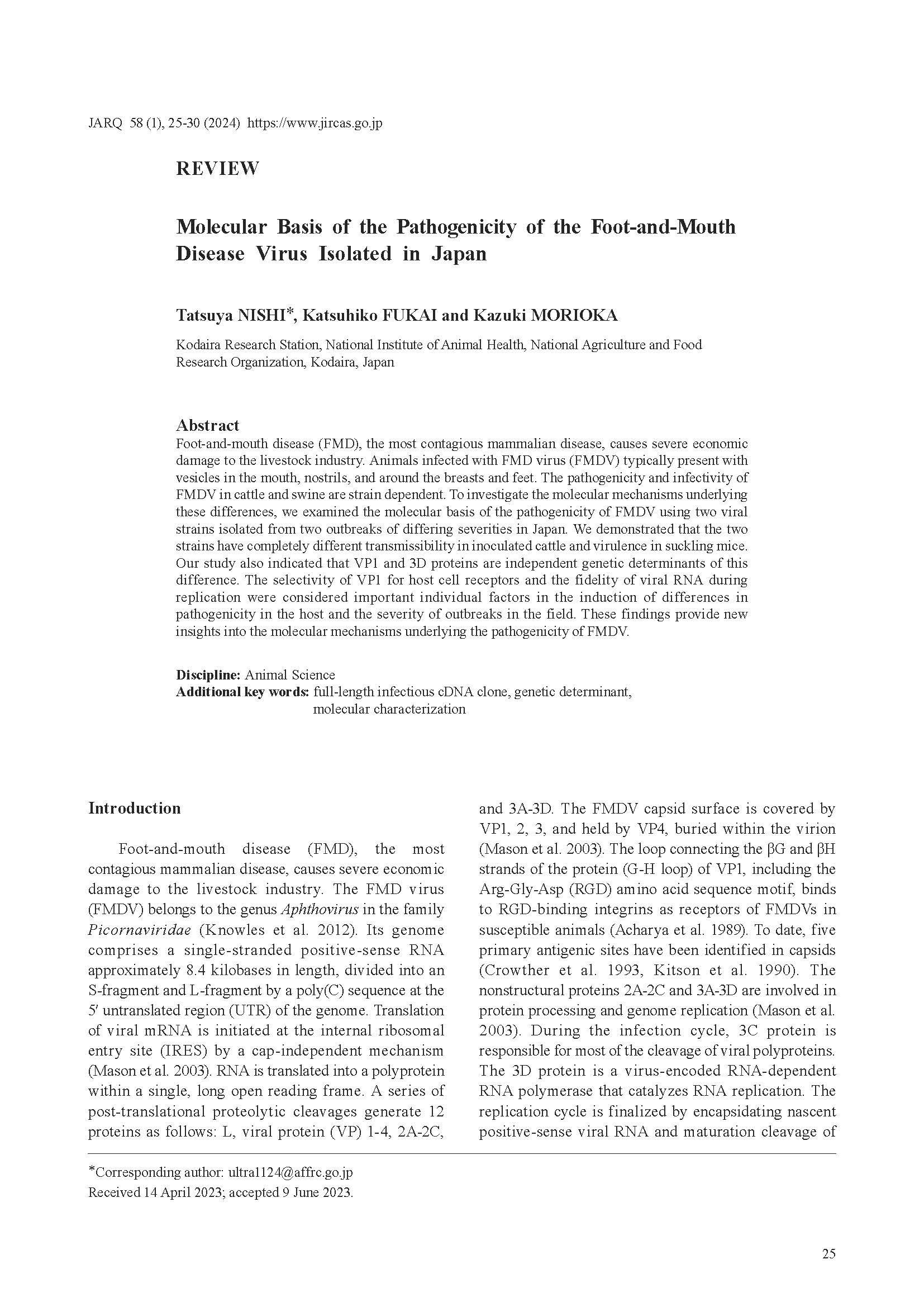Molecular Basis of the Pathogenicity of the Foot-and-Mouth Disease Virus Isolated in Japan
Japan Agricultural Research Quarterly
| ISSN | 00213551 |
|---|---|
| NII recode ID (NCID) | AA0068709X |

Full text
jarq58-1_25-30.pdf234.56 KB
Foot-and-mouth disease (FMD), the most contagious mammalian disease, causes severe economic damage to the livestock industry. Animals infected with FMD virus (FMDV) typically present with vesicles in the mouth, nostrils, and around the breasts and feet. The pathogenicity and infectivity of FMDV in cattle and swine are strain dependent. To investigate the molecular mechanisms underlying these differences, we examined the molecular basis of the pathogenicity of FMDV using two viral strains isolated from two outbreaks of differing severities in Japan. We demonstrated that the two strains have completely different transmissibility in inoculated cattle and virulence in suckling mice. Our study also indicated that VP1 and 3D proteins are independent genetic determinants of this difference. The selectivity of VP1 for host cell receptors and the fidelity of viral RNA during replication were considered important individual factors in the induction of differences in pathogenicity in the host and the severity of outbreaks in the field. These findings provide new insights into the molecular mechanisms underlying the pathogenicity of FMDV.
| Date of issued | |
|---|---|
| Creator | Tatsuya NISHI Katsuhiko FUKAI Kazuki MORIOKA |
| Subject | full-length infectious cDNA clone genetic determinant molecular characterization |
| Publisher | Japan International Research Center for Agricultural Sciences |
| Received Date | 2023-04-14 |
| Accepted Date | 2023-06-09 |
| Available Online | |
| Volume | 58 |
| Issue | 1 |
| spage | 25 |
| epage | 30 |
| DOI | 10.6090/jarq.58.25 |
| Language | eng |
